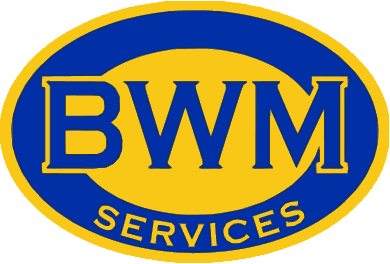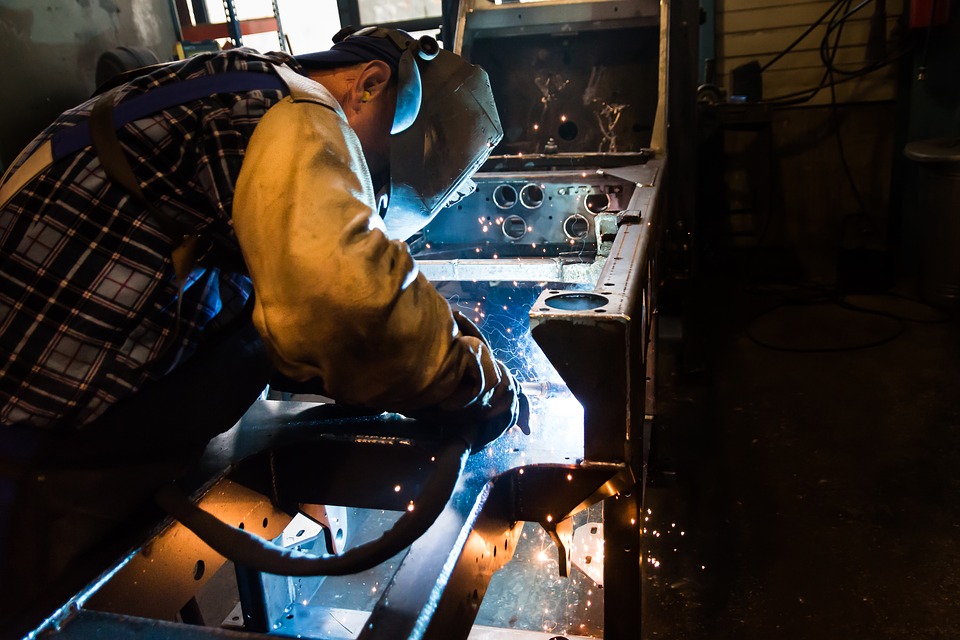Choosing Filler Metals for Carbon and Low-Alloy Applications
Concerns Inside Your Operations
Manufactures in the shop environment need to consider how accessible the welding joints are to the operator or robot. The size of the workpiece, large or small, is a consideration. The size will influence the welding process selection of filler metals for carbon and low-alloy applications.
If you can keep the workpiece in the flat welding position, submerged arc welding (SAW) would be the likely process of choice. This is due to high productivity and weld quality. If you need out-of-position welding, you can only use specific processes. Manufacturers might have to rely on the shielded metal arc welding (SMAW), flux cored or other processes. These offer fast-freezing slag. In this scenario, the position dictates the process and filler metal.
Additional Considerations
Some filler metals have a harsher arc and provide more penetration. However, other electrodes penetrate less and have a smoother, softer arc. Some, as indicated, feature a fast-freezing slag and are great for welding out of position. Some products have a more fluid weld pool for easier wet-in at the weld toes. Each product will weld differently and present its own unique learning curves for the typical operator.
Operator preferences and application requirements may dictate final filler metal selection for processes that require shielding gas. Shielding gas selection has an affect on at least three key factors:
- operator appeal
- penetration
- cost
Generally, higher argon blends are easier to weld with. However, they cost more and will offer a different penetration profile compared with 100% CO2. Utilizing these argon blends, operators might notice a more fluid pool, a smoother arc and less spatter.
Indoors vs. Outdoors
In addition, there’s the question of whether the welding will take place indoors or outdoors. When welding indoors, operators can take advantage of a gas-shield process. When welding outdoors, the welding area requires protection to keep the shielding gas from blowing away. If using a gas-shielded process outdoors, 100% CO2 is commonly specified because of its lower cost and common availability.
Weld fume control management and weld cleanup are critical issues. A submerged arc weld is covered with flux and produces limited fume. Other processes, such as shielded metal arc and flux cored welding, generate more fumes. This means weld fume control becomes a factor. All three of these processes require postweld cleanup such as management of discarded slag and flux. Gas-shielded processes tend to generate lower amounts of fume and slag. A combination of product and process selections, weld procedures, shielding gas and external equipment can reduce and control fume.
Not only do manufactures have the responsibility to provide tools for their welders, but more importantly, to protect their workforce. The following are some ways BWM Services does this:
- Properly installing engineering controls, such as ventilation system improves the shop atmosphere and enhance worker safety.
- Solutions such as Lincoln Electric’s low fume pulse waveforms for welding equipment helps reduce fume levels.
- Personal protective equipment, such as powered air-purifying respirator helmets helps clear the area around the operator’s face.
Keep in mind, the experience level of each welder as well. Welders are skilled tradespeople who have their own distinctive way of doing the job. Each may prefer specific arc characteristics. There is a wide range of filler metals for carbon and low-alloy applications that offer slight operating differences which have a design to satisfy the majority of welders.
Concerns External to Your Operations
Numerous industries and applications must comply with codes and standards set forth by their customers and third-party national or international organizations. Such organizations include, but are not limited to, the following:
- AWS
- American Society of Mechanical Engineers (ASME)
- American Bureau of Shipping (ABS)
- Det Norske Veritas (DNV)
- Lloyd’s Register (LR)
These organizations have necessary requirements dependent upon the industry segment and application.
There are very specific chemical composition and mechanical property requirements that you need to meet for filler metals to receive their classification and certification from these agencies. Mechanical properties include yield and tensile strength, elongation and charpy impact toughness.
The purpose of these certifications is to provide fabricators with the confidence that the filler metal meets or exceeds the composition and mechanical property requirements of the weld and ultimately ensure longevity of the component they are welding.
The Importance of Standards and Additional Agencies
AWS has standards for filler materials and classifies them to provide invaluable information about the usability of the electrodes. This includes what base materials the filler metals are ideal for from a composition and mechanical standpoint. Also, AWS classifications provide usability information to ensure that the products are to optimize performance.
These standards provide guidelines for welding consumable manufacturers in the design and development of their products and to help provide a high level of consistency from all manufacturers of welding consumables to ultimately protect the fabricator.
Additional agencies govern some industry segments based upon what is being welded and the application. For instance, the offshore industry often needs to meet the requirements by ABS or DNV. The cross country pipeline industry segment will often need to meet American Petroleum Institute (API) requirements. The power generation and process industries may have to meet the requirements from ASTM or the Department of Energy (DOE). Each third-party agency has codes and guidelines to ensure the integrity of the welded component.
Another importance consideration is buy America. It may be mandated if the work is done to rebuild the U.S. infrastructure. This usually stipulates that all steel used for a project is both manufactured and melted in the United States. This often includes welding consumables. Documentation can be provided by the welding manufacturer regarding the origin of the material.
How to Make the Best Choice of Filler Metals for Carbon and Low-Alloy Applications
There’s no such thing as a single right choice, but rather the best choice of filler metal. When it comes to selecting the best filler metal, there are a number of industry- and application-dependent issues to consider. One overarching requirement common to all manufacturers is choosing a filler metal that assists with fabricating a quality product, which offers sufficient service to life. However, there is a lot to keep in mind when choosing the best choice for each workplace.
There are numerous categories for each alloy and each welding process. Tensile strength varies for the particular alloy and codes for the base material you are joining. What alloy is being used and how it is being used will determine the filler metal selection. Make sure to check with the appropriate codes that require certain stress relief or strength levels.
External Agency Requirements
In addition, manufactures may take the external agency requirements and demand a filler metal that meets additional internally generated requirements above and beyond established agency standards.
The code may say the filler metal has to meet impact toughness of 20 ft lb at -20°F, but manufacturers might demand a filler metal that meets impact toughness of 40 ft lb at -40°F.
Packaging
Packaging can be a factor in safety and productivity. Instead of lifting 60-lb coils, manufacturers may specify 33-lb spools to make lifting ergonomically safe for their employees. On the other hand, specifying larger packages, like 1000-lb drums or boxes, can reduce changeover time and enhance productivity.
Deposit Composition
Deposit composition is also crucial. Filler metals for specific pipeline applications have to meet AWS and NACE requirements for quality and consistency.
If there are any defects in the weld, such as weld cracks or inconsistencies on the weld surface, repair rates will increase and productivity will decline.
Productivity
Productivity is also important for automobile manufacturers. Specific throughputs are necessary, and they often have robotic weld stations joining parts and must avoid, or at least severely limit, bottlenecks. In addition, there’s an expectation of faster travel speeds and higher deposition rates on each part at each station.
For automatic and semiautomatic welding processes, feedability is particularly critical. Wire must be straight, so cast and pitch are important.
Have your operator test and evaluate which filler metal welds more smoothly or has a softer arc, compared with a harsher arc. Test and compare the penetration profile provided by different filler metals when welding. Often times, companies have applications where they feed wire over a long distance from drums or coils located up on a mezzanine away from the arc. Therefore, consider a filler metal that can accommodate the longer feeding distance.
Choosing a filler metal that is best for your applications requires significant consideration of both internal concerns and external influences. Due diligence during the selection process will pay dividends to ensure the highest quality and most cost-effective weld deposit and will extend those benefits to the overall manufacturing operation.
These are just a few tips for choosing the best filler metals for carbon and low-alloy applications. For more information about our filler metals for carbon and low-alloy applications and services here at BWM Services, contact us with the link below.
Source: aws.org


